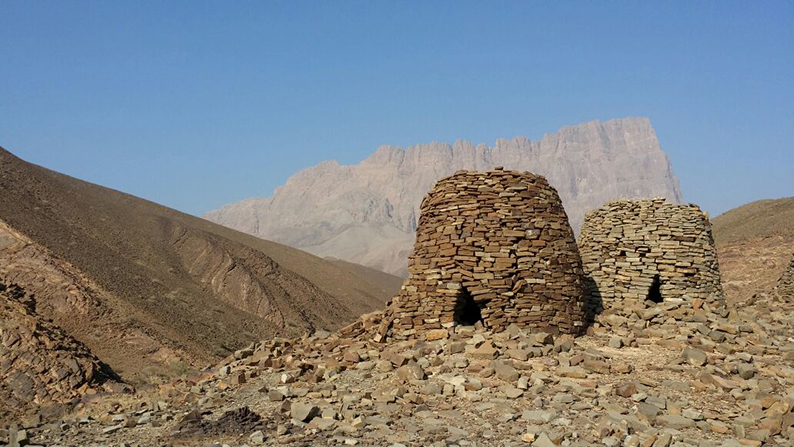A necropolis site standing on top of a hill overlooking the village of Al Ayn. This sophisticated grave site dates back from the bronze age some 2600 – 2000 BC and remains in particularly good order given its age.”
The Al Hajar mountains are full of treasures, both natural and cultural. For the one who takes the time to look around, it’s a fascinating journey. But the key word here is “takes the time to look around”. Because the scenery is so monochromatic, nothing really stands out besides occasional palm gardens at the bottom of deep wadii. Because all past human constructions were build with local stones and mud, they are camouflage. Add the fact that most are in a state of such decay, finding them becomes a treasure hunt. So a glimpse from your car window as you zoom through the trail is not gonna give you anything. And don’t expect signage to give you clues to were you have to go or look. Indeed, very little is done by local authorities to guide you towards most of the interesting architectural vestiges. Yes, the main forts are mentioned on the brown tourism signs standing by the side of the main roads, but none of those will help you on the back trails. Be aware, be patient, be motivated.
The Al Ayn Umm al Nar tombs are a perfect example. It’s a major archeological landmark. It’s on the UNESCO list of human heritage, and as such figures on every tour guide book. Yet, there is no sign indicating it’s presence until you are right in front of it. Nothing on the road passing by, no parking for you to stop, not even a clear path. Once you see it, you have to figure out how to get there through the local plantations. In a way, that is what makes Oman so great. It’s not a typical tourist attraction, with its formatted destinations, tour buses and gift shops. It requires you to search and discover. It needs you to “take the time to look around”.

